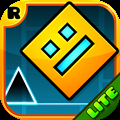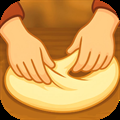Ocean World: Eden Crafters - How To Build And Craft

In the world of Ocean World: Eden Crafters, you'll be touching down on a desolate planet, alone and with few resources, but plenty of ingenuity. It's up to you to help terraform this world into something hospitable for other humans, and it's going to be a long path full of exploration, building, and tribulations.
RelatedBest Base-Building Games, Ranked
If you love making yourself at home then these base-building games offer a range of ways to make your very own base.
PostsAt first, all you'll have is a few materials, and you'll need to craft plenty more as you progress in the game, from power-generating machines and a livable base, to machines that help automate resource gathering and begin the terraforming process. If you're having trouble with the systems, we've got you covered.
At the time of this article, Open World: Eden Crafters is only available as a demo, and information within is subject to change.
How To Craft Materials And Furniture
While most things are going to be made in the Build Mode tab in your menu, the materials you'll need to make them come from crafting them at one of the various crafters or producers; the Workbench, Assembly Table, or Plant Grower. The first thing you'll need to do is gather enough resources, and the majority of any item in the game needs one of several base materials.
On Ocean World, the starting planet, you'll find several materials you can mine in the immediate area around your ship:
- Rocks, which can be turned into Cement.
- Iron Ore, which can be turned into Iron Bars.
- Copper Ore, which can be turned into Copper Bars.
- Quartz, which can be turned into Silica.
- And Cobalt Ore, which can be turned into Cobalt Bars.
You'll want to make your first base close to your spawn location, as oxygen is in short supply initially and entering the menu for a break does not pause the game, so your food bar will continue to go down.
You'll first need to craft at least one Living Compartment, which you can make with Iron Plates and Cement, including those from your ship's inventory, and place it somewhere on the planet. Inside, you'll have a small square big enough to house at least one of the most important furniture items, the humble Workbench.
The Workbench gives you the ability to craft the most processed materials, such as Iron Bars, Cables, and Gears, which you'll need to craft more advanced machines, buildings, and equipment.
Some recipes also require Organics, which are made in the Plant Grower furniture that becomes available soon after you unlock the Workbench.
At the Workbench, you can select any item and start a crafting queue for it by selecting it, and you can add more items to it by repeatedly selecting the item, up until you run out of materials, or switch recipes.
Once you've got the materials, it's time to actually do some crafting; the Workbench handles most basic materials, and more recipes will be unlocked as you unlock new furniture or materials. Even once you get more advanced crafting stations, you'll also need to return to the Workbench for what it offers.
Leaving the Workbench while you're in a crafting queue will end the crafting process and make you have to start the queue over.
With advanced crafting stations like the Assembling Bench, they can each make specialized materials from base materials that are used for better Production structures. It also makes technological materials and Equipment that improve things like your maximum Oxygen.
How To Build A Base
When you access the Build Menu from your inventory or by pressing Q, you'll find the majority of structure recipes here, like automation and machines, as well as everything you'll need to make a base, and single building blocks for freeform building and paths.
Recipes are separated into main categories, then organized into sub-categories by their function, and more will be added to each one as you unlock them through progression:
Main Category
Function Sub-Categories
Recipes Included
Production
Machines
Miner, Forge, Advanced Miner, and Part Producer
Terraformation
Water Pump, Greenhouse, Ground Fertilizer, and Analysis Radar
Logistics
Conveyor, Container V1, Container V2, Conveyor Splitter, Conveyor Merger, Water Pipe, Pipe Hub, and Beacon
Power
Windmill, Solar Panel, and Exterior Lamp
Base
Living Compartment
Base Compartment, Electric Panel, Door, Window, Double Window, Glass Door, Bed, Interior Door, Interior Wall, and Wall
Vehicle Hangar
Furniture
Equipment
Workbench, Assembling Bench, Plant Grower, and Trashcan
Furnishings
Crate, Locker, Desktop, Chair, and Table
Foundations
Building Parts
Exterior Stairs, Platform, Fence, Roof Fence (Left), Roof Fence (Middle), and Roof Fence (Right)
Blocks
Ground, Asphalt, Bricks, Corrugated Plates, Roof Tiles, Wood Planks, Bare Concrete, Bunker Concrete, Yellow Stripes, Concrete Pavement, and Floor Panels
Glass
Glass Block (Available in multiple colors with the same recipe)
Buildings
N/A
N/A
You'll see what materials an item needs to be crafted and a description of it, and you can also pin recipes to your hotbar by right-clicking them,so you can give yourself quicker access to crafting multiple copies of things you'll end up needing several of, like Containers and Conveyors.
If you need more flat ground to build on, or you've accidentally made a hole, you can craft Ground from the Blocks category in your Build Menu and use it to terraform an area or fix holes.
For the most part, you'll want your things inside a Base Compartment, which is crafted from Iron Plates and Cement. Each Base Compartment creates a decent area of living space, and multiple of them can be connected together to form one large building.
To do this, you'll need to be inside the Base Compartment you want to expand, then craft the next compartment, and face one of the walls. You'll see a transparent blue preview of it, then all you've got to do is confirm it to replace the wall and add it onto the compartment.
If you try to add a Base Compartment from the outside, it will treat it as making a separate building, and they won't connect together.
Inside the Compartment, it comes standardwithone door and three blank walls, but these walls can be replaced with other Living Compartment pieces by building one like a Window, then approaching the wall you want to replace.
As you build onto your base, you can also use the Living Compartment pieces to section off and make individual rooms and areas with other pieces, and this can be done by building a piece such as a wall, then attaching them to the central pillars that appear as you expand the base.
Combined with the furniture items, you can use Walls and Interior Doors to create individual rooms for you or to make rooms specific for certain crafters.
How To Make Building Blocks
Besides the actual base pieces, you also have ones for more freeform building or additional designing, like the Platform and Exterior Stairs allow you to make bases up higher off the ground. The singlular blocks can be used to build structures by themselves, as well as replace the ground or make roads if you use the Ground version of them.
Most blocks, like Wooden Planks, also have various shapes available and this is accessed by selecting the block, then holding left-click to enter into a small menu of shaped variants.
You can scroll onto one by moving your mouse left or right, then select it by exiting that menu. Each block has basic options like stairs and panels, but some, like brick, also have different-sized columns available as well, for example.
You can select the Ground version of a block within the same block variation menu available, and it's generally at the end of the list.
Blocks can either be put down as they are, or by using the grid system to show their location precisely, and snap to each other individually, just like any ground blocks do on the ground. They also don't need to be placed on a Platform or a Base Compartment to be viable either, but they can give it some fun variation, especially if you don't feel like flattening out an area.
The downside to these structures is that initially, you won't be able to stay inside them for long due to the lack of oxygen, so you'll want to stay stocked up on Oxygen Capsules until you've terraformed the planet more and increased the oxygen in the atmosphere by placing and using several Ground Fertilizers. Once you do have enough oxygen, freely made buildings can serve several functions, such as acting as your new baseor as storage houses for organization purposes, as you're able to place any type of Living Compartment piece, Furniture, or Equipment structure inside them.
Next8 Games About Terraforming
Reshape the faces of entire planets with these terraforming games!
Posts












